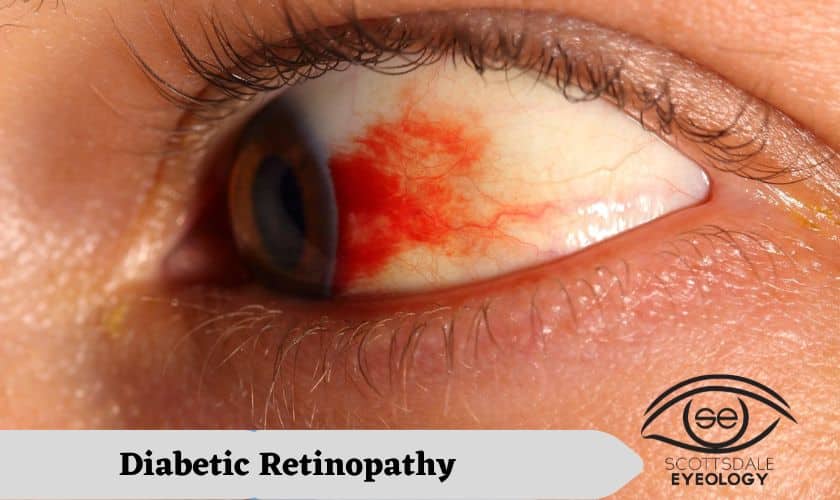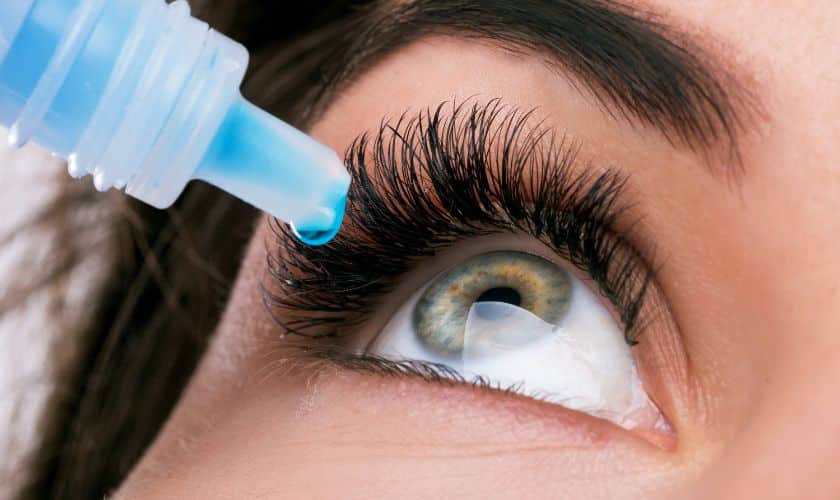Browse Eyewear

Diabetic retinopathy occurs due to high blood sugar levels from diabetes. It can damage your blood vessels in the retina, causing abnormal blood flow and leading to blurred vision. In severe cases, it can also cause vision loss, which is very problematic. But with early diagnosis and treatment, you can often protect your vision. Here’s everything you need to know about diabetic retinopathy.
What Is Diabetic Retinopathy?
Diabetic retinopathy is a complication arising from diabetes that largely affects the eyes. If you have high blood sugar levels, it affects the flow of blood in your retina, which leads to blurry vision and even vision loss. Diabetic retinopathy in Scottsdale is evaluated with the help of a diabetic eye examination that aids in understanding the severity of the situation. Although proper treatment can slow the progression of diabetic retinopathy, it’s not considered a cure. It would help if you carried out regular eye exams alongside additional treatment.
What Are The Causes Of Diabetic Retinopathy?
People with diabetes are prone to diabetic retinopathy because of high blood sugar levels. Eye damage starts when sugar blocks the tiny blood vessels that go to your retina. Commonly diabetic retinopathy occurs when small blood vessels leak other fluids and blood. It eventually causes swelling of retinal tissues causing cloudy vision. If you have prolonged diabetes, you are more likely to develop diabetic retinopathy.
What Are The Symptoms?
In the early stages of diabetic retinopathy, you might not be able to see any potential signs of it. However, the following symptoms of diabetic retinopathy are the most prominent:
- Blurred vision
- Vision loss
- Fluctuating vision
- Dark strings floating in your vision
What Are The Risk Factors?
Diabetic retinopathy leads to varied severe other eye conditions, which, if left untreated, would lead to fatal consequences. Anyone with diabetes is most likely to develop diabetic retinopathy if their blood sugar levels are properly regulated. The following are the significant risk factors of diabetic retinopathy:
- Poor control of blood sugar level
- High levels of cholesterol
- High blood pressure
- Having diabetes for a prolonged period
What Is The Difference Between Regular Eye Check-Up And Diabetic Eye Examination?
A diabetic eye examination is somewhat similar to a regular eye exam. While a routine eye examination emphasizes vision correction, a diabetic eye examination focuses on locating whether your retina is affected. On the contrary, a routine eye checkup assesses if you have a cataract or macular degeneration. When you undergo a diabetic eye examination, your ophthalmologist evaluates your retina health.
What Is The Treatment For Diabetic Retinopathy?
Once you experience blurry visions, you must visit your eye doctor to know the situation. However, if you have diabetes, your doctor will automatically ask you to undergo a diabetic eye examination. In addition, laser treatment is another procedure that is used to locate diabetic retinopathy. Laser treatment helps treat new blood vessels’ growth back to the retina. Apart from this, panretinal laser photocoagulation is another effective method for diabetic retinopathy for creating thermal burns in the peripheral retina, which causes tissue coagulation.
Summary
Let’s face it- diabetic retinopathy cannot be cured but can be treated. Don’t ignore the early signs of blurry or cloudy vision, and rush to your nearest ophthalmologist in Scottsdale to treat diabetic retinopathy. Fight diabetes with a clear vision; don’t let blurry visions affect your spirit. Schedule an appointment with your eye doctor and get treatment options today!
FAQs
- What Can Worsen The Diabetic Retinopathy Treatment?
Most studies have shown that insulin therapy often makes retinopathy worse. If you have high cholesterol with diabetes, it also worsens diabetic retinopathy.
- What Is The Most Extreme Form Of Diabetic Retinopathy?
Diabetic retinopathy can progress to a more severe type known as proliferative diabetic retinopathy. In this condition, the damaged blood vessels close off, causing the growth of abnormal blood vessels in the retina.



